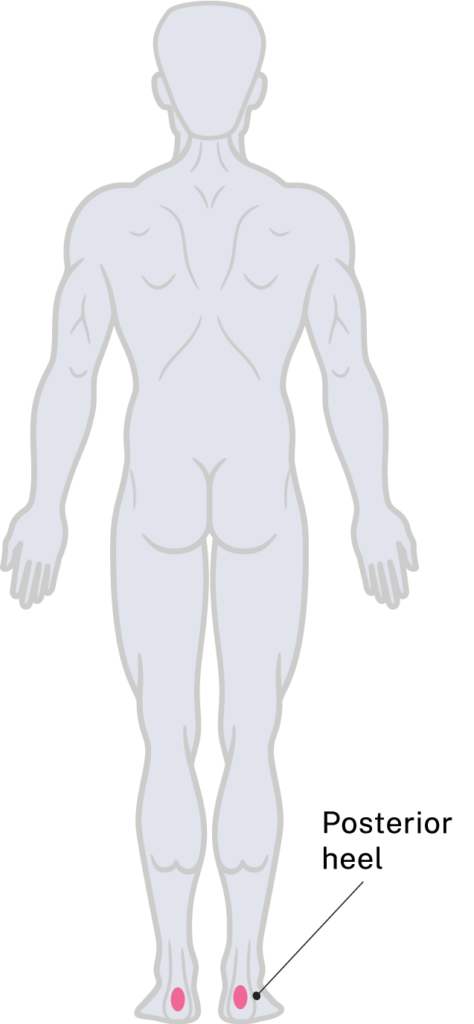Posterior heel
Specific risks
The posterior heel is at risk from direct pressure, shear, friction, or heat.
Environmental risks can include:
- orthoses on lower limbs
- ill-fitting footwear
- foot placement when in bed
- gait style
- placement of the foot in relation to heel loops and calf straps
- tone and spasticity when sitting and/or in bed
- oedema and ill-fitting compression stockings
- These areas should be assessed by palpating for ‘boggy’, soft, or tender areas.

Management of breakdown
- Review causative factors such as showering aids, footwear options, wheelchair set up and gait.
- Continue sitting as this area can be offloaded in sitting. Options for consideration may include:
- footwear without any back
- custom orthoses
- lower limb devices or pillows when in bed
- if the primary means of mobility is walking, then the clinician may need to consider the temporary use of a wheelchair if unable to wear orthoses or shoes
- review of feet positioning when using tilt in the power drive wheelchair or shower commode
- removing compression stockings
- Review and manage spasticity or tone.
- Review oedema and management with QSCIS and trained oedema therapist.
- Link with wound care or podiatry services ongoing. Posterior heel wounds can be slow to heal due to being on the lower extremities where there is impaired circulation and, possibly, oedema.
- Closely monitor for infection and cellulitis. Screen and treat this early, if suspected.
Check out other pressure injury locations and learn how to manage them.